Vegetative petunia: what is it, varieties, planting and care
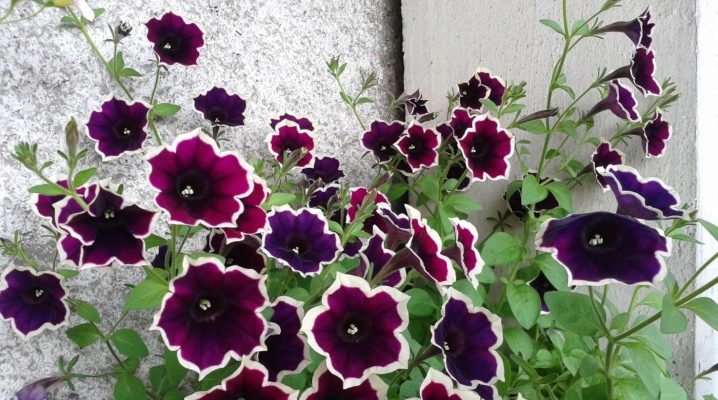
Petunias have long been dearly loved by flower growers due to the wide variety of varieties, the richness of colors and the choice of suitable growing conditions. They are quite unpretentious and do not require complex maintenance; they are planted everywhere to decorate terraces, balconies, loggias and flower beds. Most petunias reproduce using seeds, but some categories are vegetative - we will talk about them in more detail in our article.
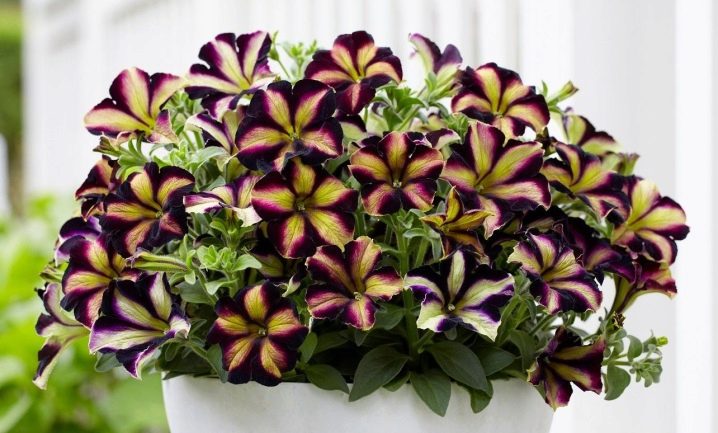
Peculiarities
Vegetative petunia is a type of plant that can be propagated exclusively by cuttings. This type of petunias includes representatives of a wide variety of varietal series. As a rule, these are ampelous varieties with double flowers. Surfinia, tambelina - these are the most typical representatives of culture, which are actively used in the design of balconies, loggias, terraces and the local area.
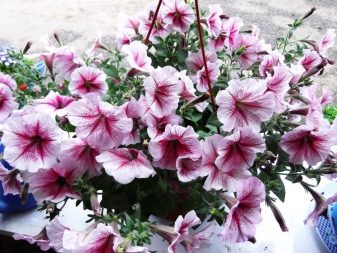
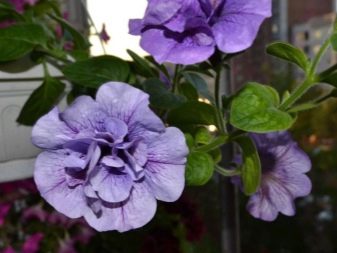
Flowers of the vegetative group are quite difficult to grow from seedlings, since in most cases they immediately lose their germination, and if they do sprout, then the young petunia will be completely different from the mother. In order to quickly and easily grow a spectacular young plant, vegetative propagation methods are used.
The main botanical features of such plants include the following features.
- Vegetative varieties of petunias in the overwhelming majority of cases, it is a spreading herbaceous perennial, it is presented in a variety of forms, but usually in ampelous.
- The root system is superficial, rod type with thin lateral roots, weak branching. The roots are shallow, so care should be taken when removing weeds and loosening this plant.
- Vegetative petunia form can be erect or creeping.
- The height of the plant depends solely on the variety., usually it varies from 20 to 80 cm, however, some varieties grow much taller. For example, not so long ago, Japanese breeders bred surfinias reaching two meters. Nevertheless, it is quite difficult to achieve such a size in central Russia - under natural conditions, the maximum height of a bush does not exceed 1 meter.
- Stem - deep green, leaves and branches grow in close proximity to it. The leaf plates are densely covered with whitish villi, the color of the leaf is dark green.
- The main decoration of vegetative petunia is funnel-shaped flowers. They are velvet or simple, each consists of 5 delicate petals, tightly fused together, the edges are corrugated, wavy or straight.
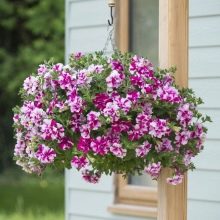
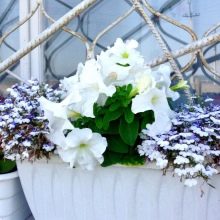
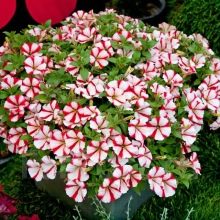
The color palette is very diverse - it is presented in all shades of scarlet, burgundy, pink, purple-violet and wine, as well as cream and milky white.
In most cases, vegetative petunias are grown outdoors, they look especially impressive when planted in stylish pots and hinged containers, although their cultivation in indoor conditions is possible.

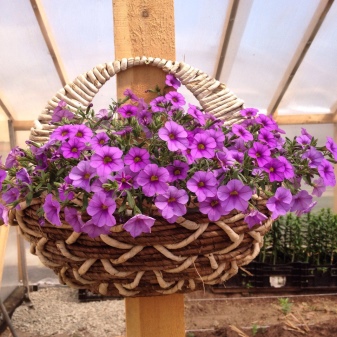
Please note that at the moment almost all varieties of ampelous petunias can be classified as vegetative. They are almost never bred by seeds, and some varieties do not form seeds at all.
Types and varieties
Let's dwell on a brief description of the most popular varieties of vegetative petunia.
- "Rome Chianti" - This is a medium-sized plant of the "Cascadias" series, growing up to 25-30 cm, characterized by increased bushiness, grows rather quickly and soon takes the form of a ball. During the flowering period, the bushes are very densely sprinkled with flowers of a pink-purple tone with a snow-white edging.
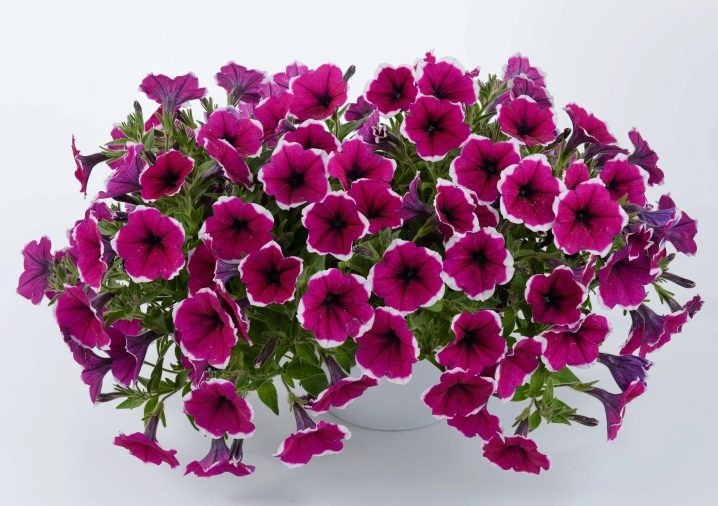
- "Bicolor Cabernet" - a very beautiful plant from the same series, two-colored flowers - they have shades of milk and cherry, characterized by early onset of flowering and rather rapid growth.
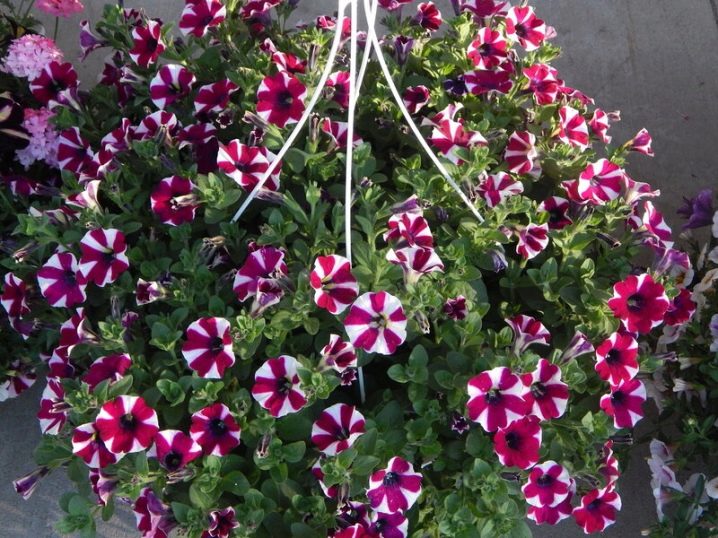
- "Salmon Velvet" - a representative of ampelous curly surfinias, differs in rather long cascading shoots with bright green leaves and flowers of pale pink or purple color. The length of each lash reaches 80-85 cm.

- "Burgundy" - another surfiniya, which is adorned with decorative flowers of a rich dark wine shade.
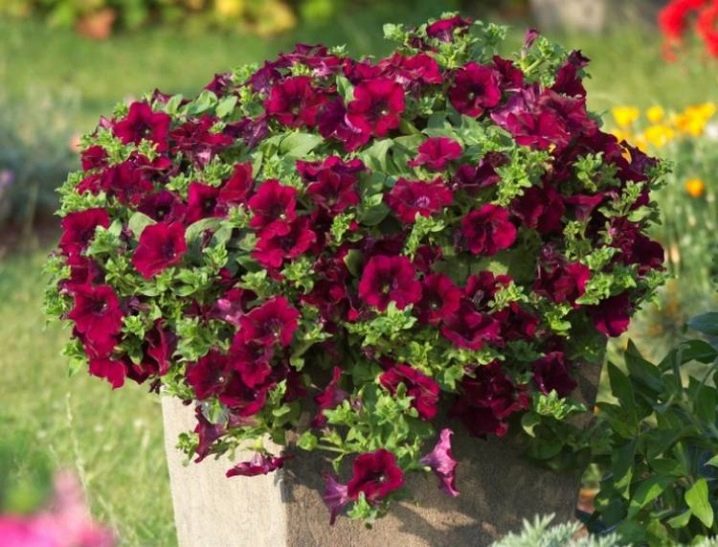
- "Deep Purple" - furry bushy surfiniya of the Shock Wave series, characterized by double purple flowers, densely covering the entire green mass.

- "Tabl white" - a variety with small snow-white flowers, it differs from many other surfinia by its long and very abundant flowering.
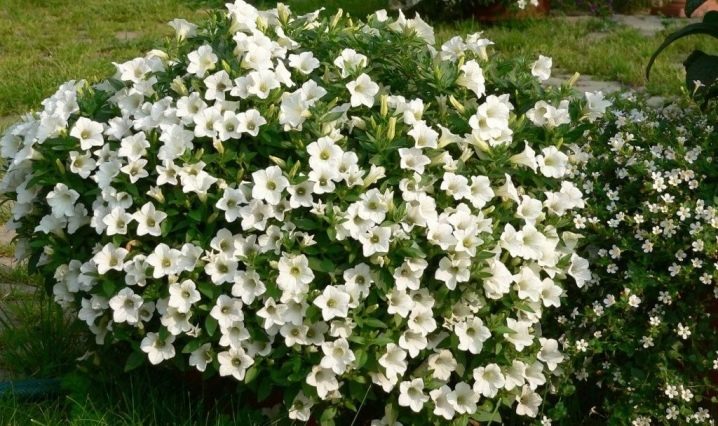
- "Parple Velvet" - ampelous plant, whose lashes grow up to 1 meter, decorative flowering - rich purple petals with a darkened core.
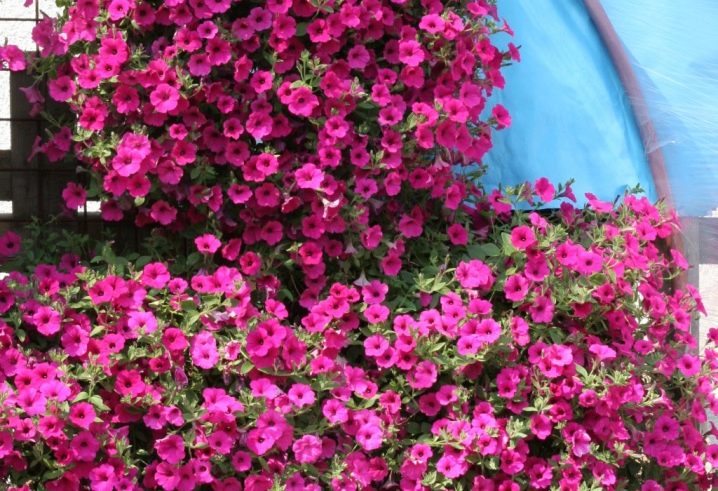
- Million Bells - a representative of the Kalibrachoa variety series, which includes more than 10 different varieties of plants blooming in white, lemon, pink, as well as raspberry and lilac colors.
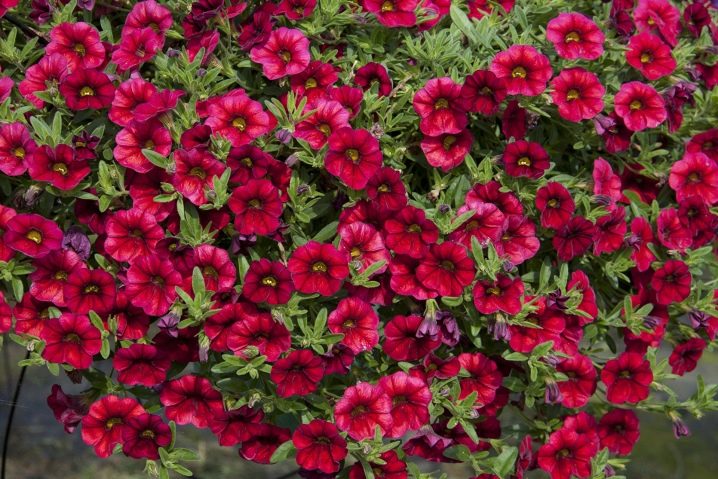
- Baby pink surfinia - a fairly compact exotic bush. The flowers are pink with pronounced dark crimson veins.

- Sky blue surfinia - plant of extraordinary beauty with sky-blue flowers.
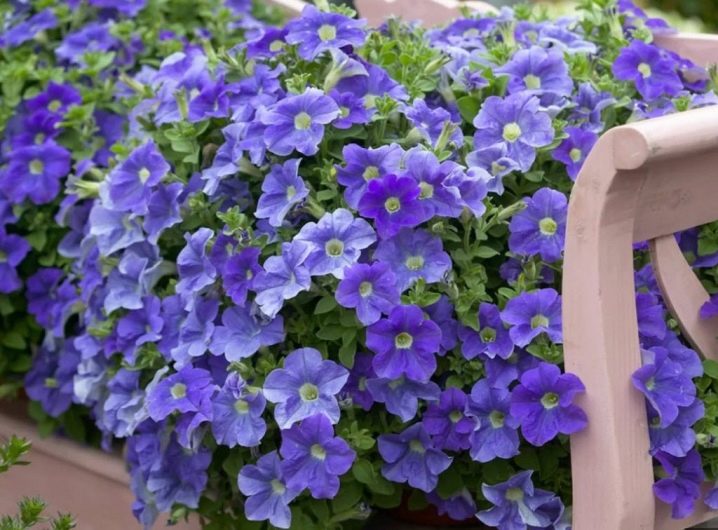
- Blushing princess - super petunia, obtained by Japanese breeders, is distinguished by delicate pink flowers and a light green-green throat.
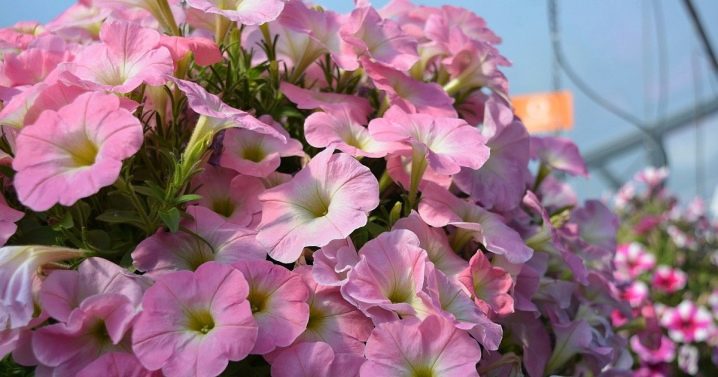
- Priscilla - tambeline with single growing flowers of light purple color, textured veins, purple.

Among florists, such novelties are popular as Monster, Night Sky, Leka Garden, and Glacier sky.
Reproduction
Vegetative petunia is bred strictly by cuttings and merits there is quite a lot of this method.
- Substantial time savings, since growing an adult plant from shoots is much faster than from seedlings.
- With vegetative propagation petunia grows a full-fledged root system.
- Flowering begins three to four weeks earlier than a plant obtained from seeds.
- With the vegetative propagation method, the daughter plant retains all the external signs of the maternal. With seed growing of hybrid varieties, this effect cannot be achieved.
In order to get planting material, you need to choose a strong plant of the species you like on your garden plot and prepare cuttings 6–8 cm in size with two internodes and 4–5 leaves. The cut must be done at an oblique angle - this will speed up the subsequent process of root formation. All lower leaves should be removed, leaving only a couple of apical leaves.

Rooting is carried out in any suitable nutrient substrate - for example, peat tablets, as well as perlite or vermiculite. However, growing of roots can also be carried out in water, then the cutting is transplanted into the ground only after the growth of full-fledged roots.
Keep in mind that after cutting, the cuttings can be stored for no more than one hour, since later their germination capacity is significantly reduced.
For successful rooting, the vegetative material must be in greenhouse conditions. - cover the pot with a shank with a plastic bag or a piece of a plastic bottle, moisten it daily and ventilate it. Only after the new leaves grow back can the greenhouse be removed. In the same period, the first pinching is carried out - this stimulates the growth activity of the lateral lashes.It should be said that pinching is not necessary for all varieties of petunias. Example - grade "Rome Chianti".
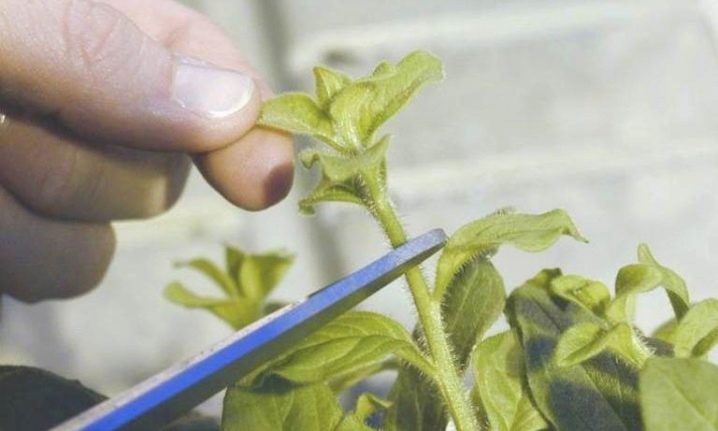
After the appearance of full-fledged roots and 4–5 leaves, you can transplant the young plant in a pots or in an open permanent place - from this moment it is better to stop pinching, since it pushes the beginning of flowering in time.
Landing
Hybrid petunias, which include vegetative varieties, respond very gratefully to sunlight, so it is best to choose open areas without shading for their placement. It will be useful to arrange the protection of the plant from wind and heavy rain - adverse weather events can harm the delicate leaves of petunias.
The plant prefers nutrient soils, it is best to purchase ready-made soil mixtures in stores, but if you wish, you can make up the substrate yourself - mix turf and leafy soil with the addition of peat, river sand and wood ash. Keep in mind that petunia does not tolerate waterlogging of the soil, therefore drainage must be present in the pot - for this, several holes are made in the bottom, and the lower part of the pot is covered by expanded clay or large pebbles by a quarter.
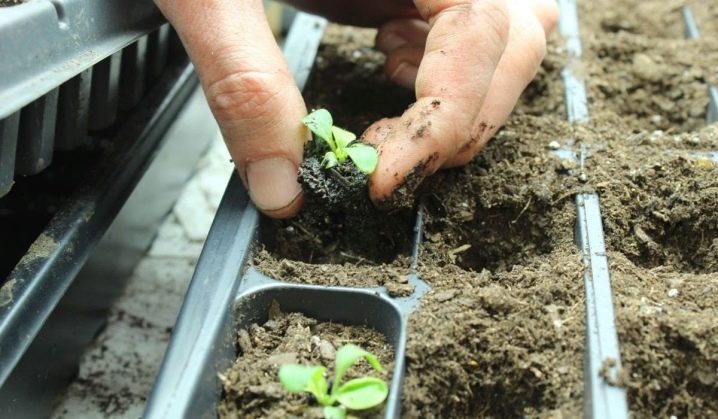
Before planting, the seedlings should be hardened, since a sharp change in temperature can destroy the plant - two weeks before moving to the street, petunias are taken out into the yard or onto the balcony every day and left there for two or three hours. No more than 2-3 seedlings are planted in each container; when planting in a flower bed, a distance of 20-25 cm should be left between the bushes.
Care
Caring for vegetative varieties of petunias is not difficult. The plant requires frequent and fairly abundant watering. In summer, especially in hot weather, you need to water the petunia 1-2 times a day, but you should not loosen the ground - the fact is that the root system of such a surface-type petunia is poorly buried, so mechanical action can damage the roots.
Top dressing should be applied every 7-10 days. At the time of growing green mass, preference should be given to nitrogen-containing compositions, and in the budding and flowering phase - to potassium and phosphorus.
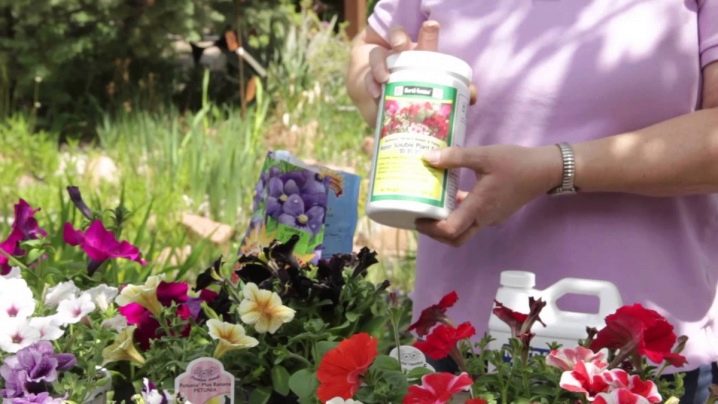
To maintain the decorative appearance of petunias, it is necessary to trim it from time to time, remove dried lashes and remove faded buds. When the flowering is over, the shoots are cut to half the length, which contributes to the establishment of new buds, which means that such shoots can be further propagated by cuttings.
For information on how to independently breed vegetative petunia, see the next video.







































































































The comment was sent successfully.